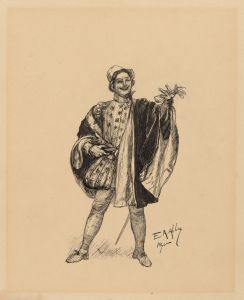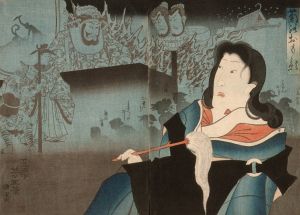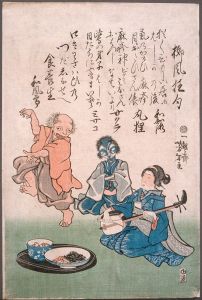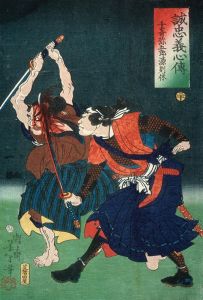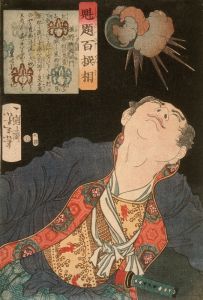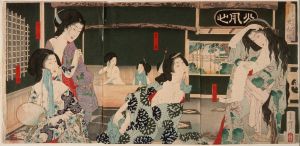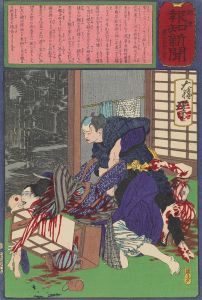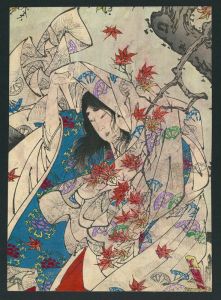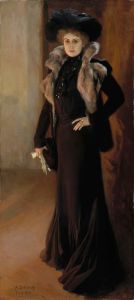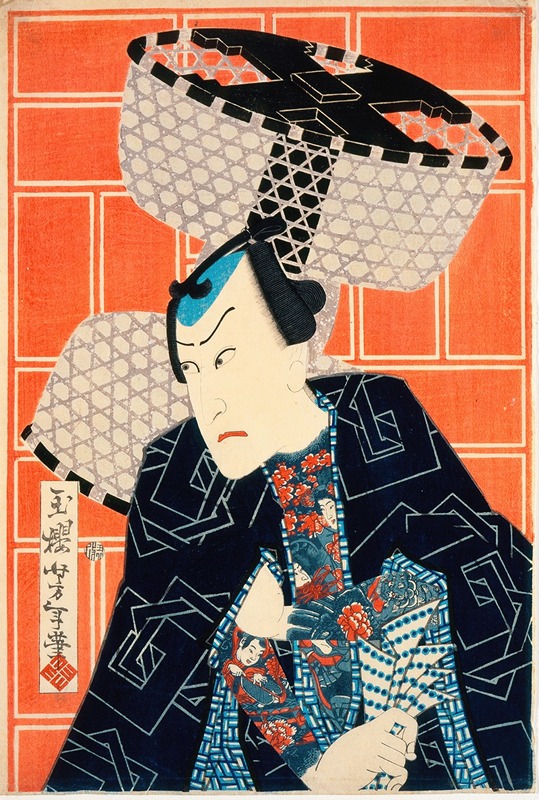
The Actor Kawarasaki Gonjūrō for a Fire Troupe
A hand-painted replica of Tsukioka Yoshitoshi’s masterpiece The Actor Kawarasaki Gonjūrō for a Fire Troupe, meticulously crafted by professional artists to capture the true essence of the original. Each piece is created with museum-quality canvas and rare mineral pigments, carefully painted by experienced artists with delicate brushstrokes and rich, layered colors to perfectly recreate the texture of the original artwork. Unlike machine-printed reproductions, this hand-painted version brings the painting to life, infused with the artist’s emotions and skill in every stroke. Whether for personal collection or home decoration, it instantly elevates the artistic atmosphere of any space.
"The Actor Kawarasaki Gonjūrō for a Fire Troupe" is a woodblock print created by the renowned Japanese artist Tsukioka Yoshitoshi. Yoshitoshi, born in 1839 and active during the late Edo and early Meiji periods, is celebrated for his innovative approach to ukiyo-e, a genre of Japanese art that flourished from the 17th through 19th centuries. His works often depicted historical scenes, kabuki actors, and supernatural themes, reflecting the cultural transitions of his time.
This particular print features the kabuki actor Kawarasaki Gonjūrō I, a prominent figure in the world of Japanese theater during the 19th century. Gonjūrō was known for his dynamic performances and his ability to captivate audiences with his dramatic portrayals. The print captures him in a role associated with a "fire troupe," which may refer to a theatrical group known for performing plays involving firemen or fire-related themes, a popular subject in Edo-period kabuki due to the frequent fires in Edo (modern-day Tokyo).
Yoshitoshi's depiction of Gonjūrō is marked by his characteristic style, which combines traditional ukiyo-e techniques with a more modern, expressive approach. The print likely showcases Yoshitoshi's skill in capturing the intensity and emotion of kabuki theater, a hallmark of his work. His use of vivid colors and intricate details helps convey the drama and energy of the performance, drawing the viewer into the scene.
The context of the print is significant as it reflects the cultural and social changes occurring in Japan during Yoshitoshi's lifetime. The Meiji Restoration, which began in 1868, was a period of rapid modernization and Westernization in Japan. Traditional arts like kabuki and ukiyo-e were influenced by these changes, and artists like Yoshitoshi played a crucial role in preserving and adapting these art forms for a new era.
Yoshitoshi's work, including "The Actor Kawarasaki Gonjūrō for a Fire Troupe," is often seen as a bridge between the classical ukiyo-e style and the modern era. His prints are noted for their psychological depth and innovative compositions, which set them apart from those of his contemporaries. Despite facing personal and professional challenges, including financial difficulties and mental health issues, Yoshitoshi's legacy endures as one of the last great masters of ukiyo-e.
Today, his prints are highly valued by collectors and art historians alike, appreciated for their artistic merit and historical significance. "The Actor Kawarasaki Gonjūrō for a Fire Troupe" is an example of Yoshitoshi's ability to capture the spirit of his time while pushing the boundaries of traditional Japanese art. Through his work, Yoshitoshi not only documented the cultural landscape of 19th-century Japan but also contributed to the evolution of Japanese art, leaving a lasting impact that continues to be studied and admired.






